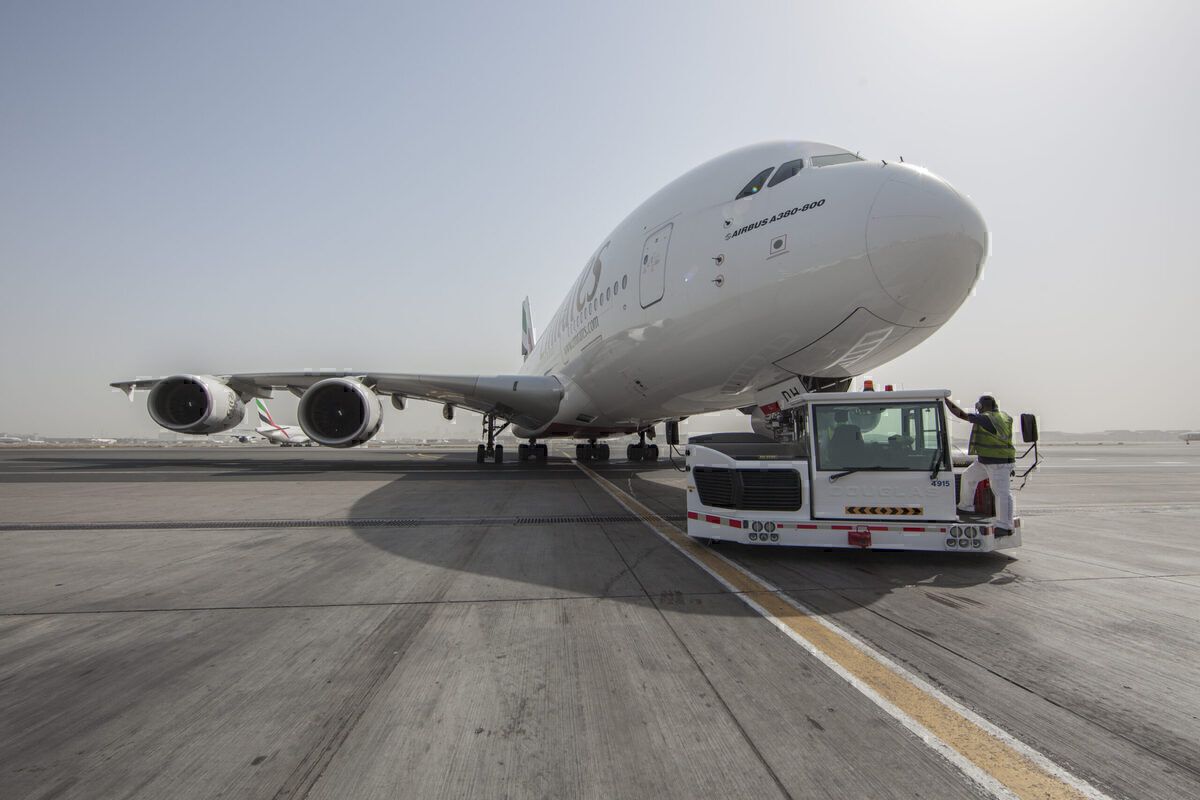Calculating the weight of an aircraft is key to maintaining safe operations throughout its life. While aircraft arrive from the factory already weighed, this can change over the years of its use. As such, airlines must weigh huge commercial planes roughly every four years. But how do they do it?
Why would you want to?
The most crucial reason an operator would want to weigh its aircraft would be to find out what its basic empty weight is. Knowing how much an aircraft weighs, as well as where its empty center of gravity is, is crucial to planning flight operations.
Manufacturers specify maximum weights for aircraft to operate safely and efficiently. In order to make the correct calculations for loaded weight and distribution of cargo (and sometimes passengers too), airlines or dispatchers must know the empty weight of the aircraft.
While aircraft receive a weight and balance report at the point of leaving the factory, this may change over time. Installing new equipment will add weight, and although the hardware is usually easy to factor in, miscellaneous mass, such as wiring, can be overlooked. Over time, aircraft tend to gain weight, for example, when new layers of paint are added over the top of old coats.
For this reason, it is good practice to periodically confirm the empty weight and empty center of gravity of a plane. But weighing a plane is a good deal more challenging than weighing a person. So how do they do it?
Preparing an aircraft for weighing
Before weighing, the aircraft must be drained of all fuel and onboard water. Even rainwater can add to the weight and produce an incorrect reading, so engineers must make sure the plane is absolutely dry and completely empty of anything that could cause an inaccurate reading.
Stay informed: Sign up for our daily aviation news digest.
Sit it on the scales
The most common method for weighing a plane is by using platform systems. Aircraft can be placed on the weighing platforms either by accessing them via a ramp, or by being jacked up and lowered onto the platform during regular maintenance.
Of course, the platform needs to be the right size for the aircraft. Some large planes have enormous tires, so the right scale size and platform choice are important here. The capabilities of the platform scale also needs to be considered. For most commercial aircraft, each scale should be capable of weighing up to 60,000lb.
It might come as a surprise, but super large aircraft don’t necessarily require heavier duty scales. Rather, they tend to have more wheels, which spreads the weight more evenly. For example, the A380 has 22 wheels to spread the load, with each wheel not exceeding that of a smaller aircraft. However, this does mean that 22 separate platforms will be required!
Both types of scales use digital measurements today. In the past, mechanical or analog meters were used, but those have largely been phased out in favor of modern digital alternatives.
Jack it up
The other method most commonly used to weigh aircraft is the ‘top of jack’ method. Each jacking point is serviced by a heavy-duty jack with a transducer at the top. On light aircraft, these can be used on top of wing jacks, but for commercial aircraft, these are usually placed under the axel.
Jackson Aircraft Weighing Systems (JAWS) is one company that supplies specialist systems for this type of operation. Their jacks can be used on the 737, A320, 757, A330, 767, 777 and 787.
The advantage of using the top of jack system is in the time saved, as well as its convenience. Instead of having to find several very heavy platforms, large tug, and deal with pulling a huge aircraft on and off platforms, the jacks can be rolled under the aircraft and jacked up in place.
You can watch JAWS undertaking an aircraft weighing operation, using a Boeing 767, in the video below:
Elevating the plane with the jacks takes less than two minutes, which is quite impressive when you consider the weights that are being handled here. Aircraft arrive with fuel already removed, and the company reports some MROs commenting that they have saved 24 labor hours by using the jacking system for weighing.
Did you know aircraft got weighed every now and then? Let us know what you think in the comments.

